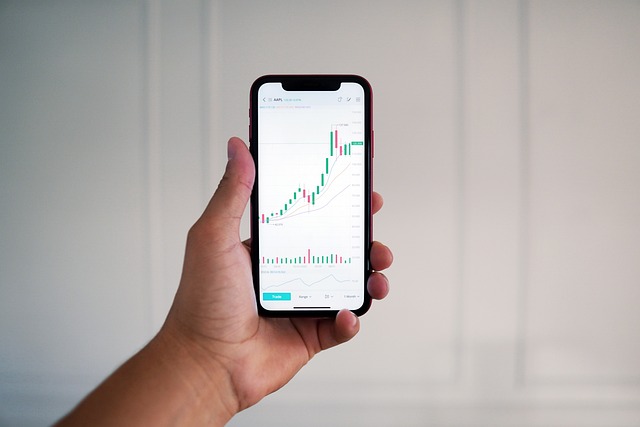The Art of Timing: When to Dive Into Investing in Stock Markets
Investing in stock markets can be one of the most rewarding endeavors for individuals seeking to build wealth over time. However, the decision of when to invest can often feel overwhelming due to the complexities of market trends and economic indicators. Understanding the art of timing, therefore, becomes essential for anyone considering dipping their toes into the world of stocks. This article delves into the nuances of market timing, highlighting factors that influence investment decisions, strategies for effective timing, and the long-term outlook for aspiring investors.
Understanding Market Timing
Market timing refers to the strategy of making buy or sell decisions of financial assets by predicting future market price movements. While some investors feel confident navigating these waters, many shy away from the notion, believing that it is more skill than art. The truth is, timing the market perfectly is challenging, even for seasoned professionals. Stock markets are influenced by a myriad of factors, including macroeconomic data, corporate earnings, geopolitical events, and even technological advancements.
Nevertheless, being cognizant of these influences can help investors make better-informed decisions. It’s important to remember that while timing can play a role, investing should ideally be seen as a long-term strategy rather than a tactic aimed at making quick profits.
The Importance of Economic Indicators
Investors often rely on economic indicators to gauge the optimal time for entering the stock market. Here are several key indicators to observe:
Gross Domestic Product (GDP)
The GDP indicates the overall economic performance of a nation. A growing economy generally signifies a conducive environment for stock market investments. Conversely, declining GDP may signal a recession, prompting caution among investors.
Unemployment Rates
The unemployment rate is another critical indicator. A low unemployment rate suggests economic vitality, while high unemployment can indicate economic troubles. Fluctuations in employment can impact consumer spending, which in turn affects corporate earnings and stock valuations.
Inflation Rates
Inflation, or the rate at which the general level of prices for goods and services rises, can also impact stock market performance. Moderate inflation can lead to increased earnings for companies, thereby boosting stock prices. However, high inflation may erode purchasing power and lead to tighter monetary policies, negatively impacting market growth.
Interest Rates
Interest rates largely dictate borrowing costs and consumer spending. When interest rates are low, borrowing becomes cheaper, which often fuels economic growth and contributes to rising stock prices. Conversely, higher interest rates can suppress spending and investment, leading to stagnant or declining stock prices.
Psychological Factors in Market Timing
Beyond economic indicators, investors must also consider the psychological drivers of market movements. Investor sentiment can flip trends unexpectedly. During bullish markets, optimism can push prices higher, while bearish sentiment can lead to panic selling. This cyclical nature of psychology in the market underscores the complexities of timing investments.
Fear and Greed
The psychological forces of fear and greed can dominate market behavior. Greed may drive investors to overextend themselves, resulting in market bubbles. Meanwhile, fear often leads to panic selling. Recognizing these emotions can help investors maintain a rational approach to stock buying and selling decisions.
Understanding Market Cycles
Markets move through cycles, including expansion, peak, contraction, and trough. Understanding where the market lies in its cycle can help inform timing decisions. Historical data has shown that market cycles often last longer than anticipated, leading investors to miss opportunities. By recognizing these cycles, investors can seek entry points that align with their long-term strategies.
Effective Strategies for Timing Your Investment
While perfect timing is elusive, specific strategies can enhance your chances of successful investing:
Dollar-Cost Averaging
Dollar-cost averaging involves consistently investing a fixed amount of money into a specific investment, regardless of its price. This approach reduces the impact of volatility, allowing investors to purchase more shares when prices are low and fewer shares when prices are high. It is a pragmatic way to mitigate timing risks.
Value Investing
Value investing focuses on purchasing undervalued stocks with the expectation that their true value will be recognized by the market over time. This approach often leads investors to enter the market during downturns or periods of stagnation, making it an effective long-term investment strategy.
Trend Following
Trend following strategy involves analyzing stock price movements to discern potential investment opportunities. This technical analysis focuses on market behavior rather than company fundamentals and can help investors identify when to enter a rising market or exit a declining one.
Market Timing Tools
Various tools can assist investors in timing their market entry and exit points. Tools such as moving averages, Bollinger Bands, and Relative Strength Index (RSI) can help determine buying and selling signals based on historical price data.
Long-Term vs. Short-Term Investment Outlook
Many investors grapple with the decision to pursue long-term or short-term investment strategies. Long-term investing is generally favored, as it allows for recovery from market fluctuations and harnesses the power of compounding returns. Market timing plays a less pivotal role in long-term strategies, as they prioritize fundamental analysis and company growth over short-term price movements.
Short-term investing, on the other hand, often requires acute attention to market timing. Traders operating in this space might use technical analysis and rapid trading strategies to capitalize on minute-to-minute fluctuations. While lucrative, short-term investing can also entail significant risks and emotional strains.
Conclusion
While the art of timing the stock market involves analyzing various economic indicators, psychological factors, and effective strategies, it’s essential to remember that uncertainty is inherent in any investment decision. A well-thought-out approach that combines both market analysis and an understanding of one’s investment goals is critical. By focusing on long-term growth and maintaining a disciplined investment strategy, individuals can navigate the nuances of stock market timing with greater confidence. It is always wise to remain aware of external factors, in addition to developing a deep understanding of the market’s rhythm.
Ultimately, successful investing is not solely about timing the market; it’s about being prepared, staying informed, and having a strategy that accommodates both the ebb and flow of market performance and the investor’s personal financial goals.








